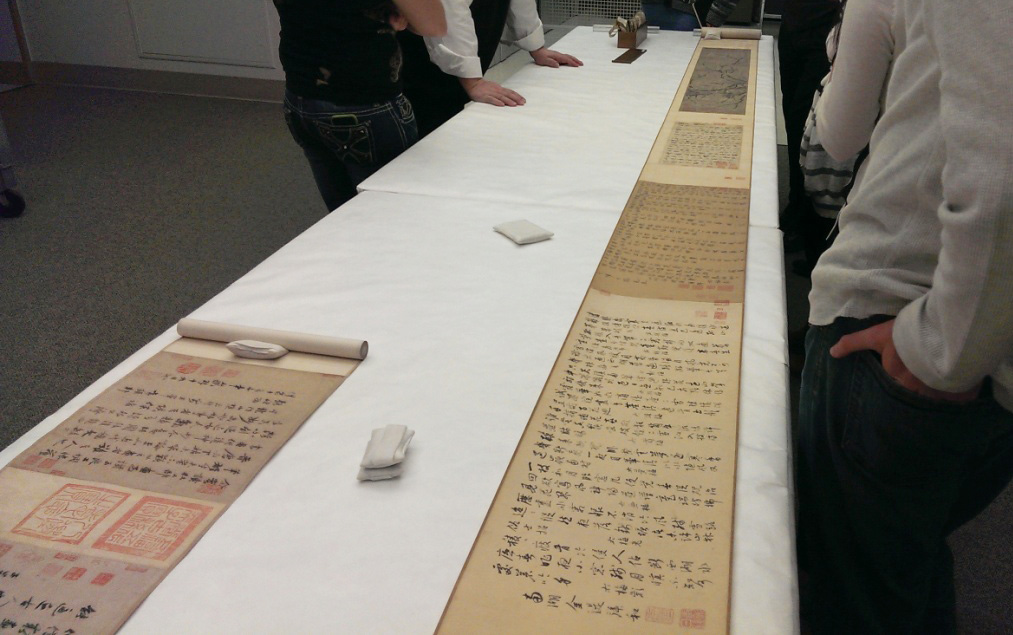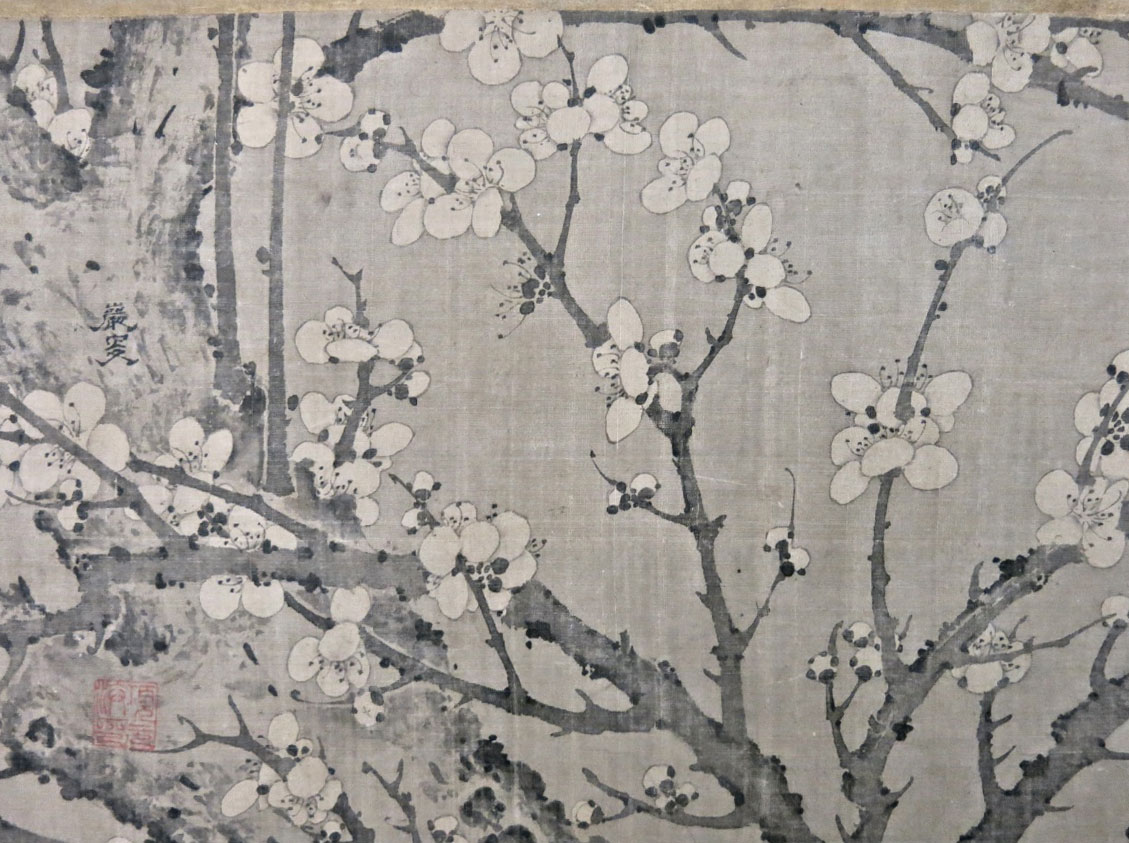Ink Plum Blossom: WHAT’S THIS THING?
Ink Plum Blossom: The mirror image of a scholar in the Song Dynasty
by Gerui Wang (University of Michigan, 2014)
Handscrolls
You are looking at a Chinese painting in handscroll format (fig. 3). The handscroll is a literal translation of the Chinese word shoujuan, (shou:’hand’; juan: ‘scroll’) . Here is a standard introduction to handscroll offered by Jerome Silbergeld:
Handscroll paintings range from less than three feet to more than thirty feet in length; the majority are between nine and fourteen inches high. Paintings are mounted on a stiff paper backing; those of greater length are often painted on several sections of silk or paper joined together. At the left is attached a round wooden roller, about which the scroll is wound when not in use and which is occasionally decorated with a knob of ivory or jade. At the right is a semi-circular wooden stave which keeps the scroll properly stretched from top to bottom. The painting is viewed from right to left, as one reads in Chinese, unrolling a bit at a time from the roller and transferring the excess to loose roll temporarily maintained around the stretcher on the right. About one arm’s length is exposed at a time for viewing.7
Fig 3. Yansou, Ink Plum Blossom Handscroll
Yansou’s handscroll Ink Plum Blossom
Yansou’s Ink Plum Blossom handscroll, now in the Freer Gallery of Art, is painted with ink on silk. The painting was kept in a wooden box with engraved text on sliding lid. The painting was catalogued in the Qing dynasty imperial catalogue <>Shiqu baoji.> The scroll was wrapped by an imperial brocade wrapper, which contains handwritten texts and a jade fastening pin. Attached to the scroll is another jade fastening pin with engraved text, and one outside label slip. There is one blank sutra-paper frontispiece and one inside label slip. There is one signature of the artist (fig. 4), but not any artist’s seal has been found. Following the painting of plum blossom, there are three colophons. There are 111 seals in total: eight of them are inscribers’ seals, eight of them are imperial seals from the Qianlong Emperor’s reign (1735–1795) and the rest are collectors’ seals. The wrapper was made by the Imperial workshop in mid-18th century. The wrapper is of brown and white brocade with inscribed white silk lining (fig. 5-6). The inscription is “Poetic Idea of Plum Blossoms, by an artist of the Song dynasty. Superior class, divinely inspired first [grade]. Spring, ninth year of the Qianlong reign period [1744], cataloged at imperial command by your subjects Zhang Zhao (1691–1745) et al.”
Fig. 4 Yansou, Ink Plum Blossoms
 |
 |
| Fig. 5 | Fig. 6 |
Next, read about: THE GENRE
7. Silbergeld, Jerome, Chinese painting Style: Media, Methods, and Principles of Form, Seattle and London, 1982, P.12-13↩



